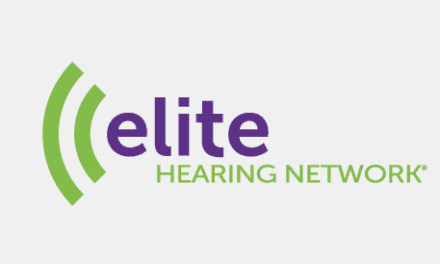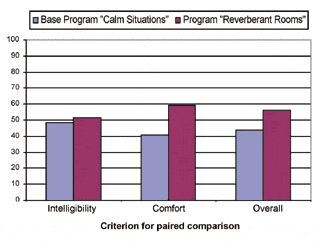Opinion | May 2018 Hearing Review
A different viewpoint in the face of recent calls for unbundled and itemized pricing
At a time when this magazine and other publications have run articles that strongly endorse the unbundling of products from services and itemizing fees, many hearing care professionals have resisted. Here is the rationale behind one audiologist’s desire to remain “bundled.”
Audiologist A has a strong belief that she has worked hard to be where she is today. She earned her bachelor’s degree, then her master’s degree, and finally, her AuD.
Dr A believes she is a highly qualified professional who will only be appreciated and respected by her patients if she treats them the way she thinks highly respected professionals should act. That means, to Dr A, that giving away her services is selling herself short. She believes that she ought to charge for every service every time because that is what highly respected professionals do. Dr A makes $110,000 a year and has three employees. She works full time, and, in addition, she has a full-time receptionist and two full-time audiologists working for her. She charges for every visit for every patient. Tubing changes, hearing aid reprogramming, receiver replacements, dome replacements, cleanings, and any other conceivable patient visit involves a charge to that patient. Dr A also spends at least $30,000 a year on marketing.
Audiologist B has a different strategy. Audiologist B has the same credentials as Audiologist A. In fact they earned their AuDs together! Dr B also believes she is a highly qualified professional who will only be appreciated and respected by her patients if she treats them the way she believes highly respected professionals should act. She believes that offering outstanding service is her key to success. Dr B spends only $2,000 a year in marketing.
Dr A loves to advertise and host open-house promotions. She spends $5,000 on a direct-mail promotion. Unfortunately, due to market saturation and third-party marketing experts, she only sells 10 hearing aids as a direct result of the open-house promotion. Since her markup is slightly less than usual for these promotions (she offers an incentive of a discount for the direct-mail, open-house recipients), and she has to pay the open-house representative a percentage of each sale, Dr A ends up netting $5,000 for three days of hard work. Her receptionist spends much of her time answering phone calls from irate recipients of the open-house mailer who want to know why they were targeted for a hearing aid promotion. They want their name removed from the mailing list and never want to receive mail from Dr A again. Other callers complain that the mail was addressed to a deceased relative, and they are angry that Dr A was so negligent as to send the flyer to someone who had passed away seven years prior. While the receptionist is fielding these calls, Dr A’s regular patients are not getting their calls answered. They are having difficulty with their hearing aids and need to be seen, but Dr A’s office is too busy trying to recruit new business to take care of existing business.
Dr B does not spend the money on these promotions. In fact, Dr B relies almost exclusively on word-of-mouth referrals in her practice. Dr B makes $115,000 a year. She is the only audiologist. She does not even have a receptionist! Dr B never charges her patients for discretionary visits. She changes tubing twice a year, replaces receivers as needed, cleans aids every three months, replaces domes and retention strings as required, and even gives patients free rechargeable batteries as needed!
Dr B is in high demand. Patients love the fact they can text her at 7 PM and get a response within a half-hour, if not immediately. Dr B’s patients love the fact they can email her on weekends and get responses the same day without having to worry about waiting until Monday. Dr B’s patients think she is a truly special doctor, and cannot believe their luck at finding such compassion and dedication.
Dr B makes weekly visits to a local retirement home where she sees all patients free of charge. She tests their hearing, cleans their hearing aids, gives them free batteries, and yes, sells them hearing aids when needed. Dr B has sold eight hearing aids at the nursing home over five months. She marks the hearing aids up slightly higher to cover the frequent visits to these patients. Her markup is $1,600 per aid. Dr B has netted $12,800 from this nursing home. Marketing costs have been $0. She is loved by the patients and staff, and during the past five months has spent approximately 20 hours at the nursing home. Every patient has been by referral from staff or other patients who rave about the service. Every patient asks how they can repay Dr B for her dedication. Dr B responds that telling others about her services is sufficient. These happy patients comply and Dr B has forfeited the $30 or $40 that she could have charged for a visit and instead has earned $1,600 off one hearing aid from just one referral.
It may be hard to believe, but Dr B works only about 30 hours a week. Dr B may come in at 9:00 AM and leave at 1:30 PM, and then return again at 6 PM to see two patients after they are done with work. She may also go into the office on Saturday or Sunday to see a patient or two, but it is not every weekend, and she may well only work three hours on Wednesday or Friday. On other days she may work 9-10 hours; Dr B works as needed. Dr B’s hearing aid return rate is approximately 2%. Not only do her patients love and respect her, but they are happy with the service.
Dr A, on the other hand, has a return rate of 8%. Dr A works 40 hours a week and, yes, she has evenings and weekends to herself without the need to go into the office. But Dr A feels overworked and wonders whether she should increase the amount she charges patients for their visits. The more exhausted she feels, the more she feels she should charge.
Dr B, on the other hand, takes Spanish lessons three times a week, plays bridge one afternoon a week, as well as Mahjongg a couple of hours a week. Dr B feels quite relaxed and loves her work. She loves her patients and they, in return, love her back. She does not have open office hours, and every appointment is scheduled. When there are no appointments, Dr B is not obligated to be in the office. Dr B’s iPhone is her office phone.
Dr B can communicate with her patients regardless of whether she is in the office or not. Dr B has no problem scheduling a patient for a 2-hour hearing aid evaluation or fitting. No, not every patient needs that, but there are those who do. There are some patients who only need a 15-minute follow-up appointment a week after dispensing, and then there are those patients who need to come in every couple of days for three weeks in order to feel comfortable and happy with their new hearing aids. In Dr B’s practice, there is no “one size fits all.” Dr B sees every patient as an individual who needs individualized care. When Dr B is with patients, she accurately determines the needs of that patient and then follows through with it. Dr A, on the other hand, has a protocol and every patient is required to follow that protocol.
So how profitable is it to charge patients for minor services? How necessary is it to nickel and dime a patient in order to feel like a respected practitioner? In my opinion, nickel and diming has more to do with practitioner A’s erroneous belief that money is what earns respect from a patient. It is also my opinion that outstanding individualized service earns more respect than nickels and dimes.
Correspondence can be addressed to HR or Dr Smith at: [email protected]
Citation for this article: Smith E. Is nickel and diming your patients helping or hurting your bottom line? Hearing Review. 2018;25(5):28-29.







I agree with B. Its far more simpler to create a price that will have profit included. The profit is decided by the competitor and can vary by a couple of hundred dollars. The law states that small services should be provided free during the warranty period, so those costs can be a part of the profits. Should not be more than $200 during a three year warranty window. Unbundling is confusing. For example: A patient walks in for a simple tubing change. While trying to remove the old tubing you find it is jammed because some idiot glued the older tubing for better retention because they did not have the right sizing. Now, you could crack the ear mold trying to ream the tubing out. Or you could somehow squeeze the new tube in causing a small shrinkage that affects the sound quality. Either way you lose. Similarly you try and remove earwax from the receiver and find that you have pushed the receiver back causing a power loss, or dislodged the receiver. What do you do? Bad scenarios that make you lose mucho money!
i’m definitely a Dr. “B” – i’m an older PhD audiologist and learned hearing aids working for a Beltone Dispenser in the 1980s. i get several new patients a year because they are tired of being ‘nickeled and dimed’ elsewhere. we have to charge sales tax in oklahoma, so i partially unbundle because tax is charged only on product (not on services). but our patients appreciate walking in, getting tubes, waxguards, etc, at no charge– makes them want to give us referrals.